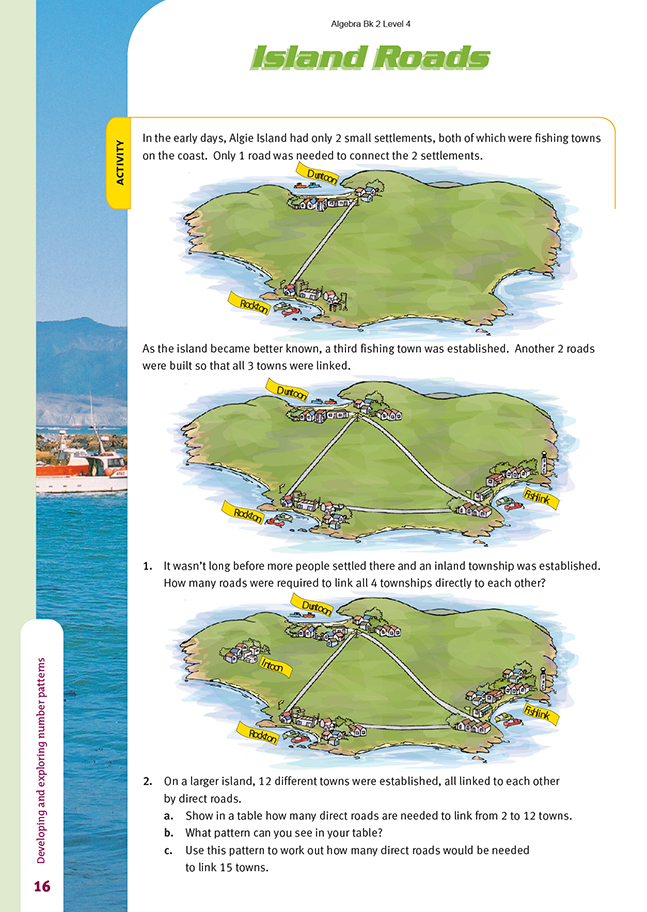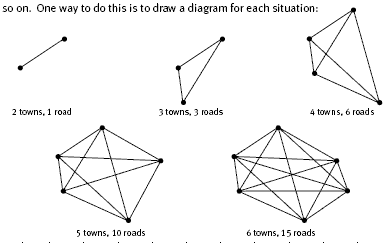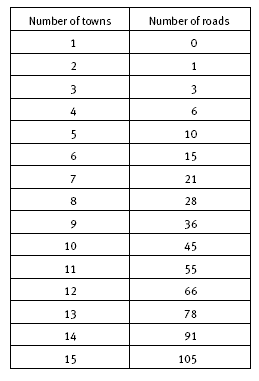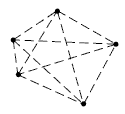This is a level 4 algebra strand activity from the Figure It Out series.
A PDF of the student activity is included.
Click on the image to enlarge it. Click again to close. Download PDF (246 KB)
use a table to find a number pattern
FIO, Level 4, Algebra, Book Two, Island Roads, page 16
This activity asks students to systematically explore the road requirements that link 2 towns, then 3 towns, 4 towns, and so on. One way to do this is to draw a diagram for each situation:
If the data from the diagrams above is put into a table, the pattern can be extended up to 12 towns and then to 15 towns.
The number of roads for 5 towns helps you work out the number of roads for 6 towns.
The number of roads for 13, 14, and 15 towns is also worked out using this pattern.
A rule for the number of roads for any number of towns can be worked out in the following way:
There are 5 towns, and there are 4 roads from each town, which is 5 x 4 = 20 roads. But each of these roads is also the road from another town, so there are just 1/2 of 5 x 4 = 10 roads for 5 towns.
This can be generalised for any number of towns: the number of roads needed for any number of towns is one-half of the number of towns times 1 fewer than the number of towns.
We can express this symbolically: when there are n towns, there are 1/2 x n x (n – 1) roads, or more simply, roads. Note that n is often used when the quantity we are considering is a whole number. We could equally well have used x.
Answers to Activity
1. 6
2. a.
b. The number of roads for:
- 4 towns is the number of roads for 3 towns plus 3
- 5 towns is the number of roads for 4 towns plus 4
- 6 towns is the number of roads for 5 towns plus 5
- 7 towns is the number of roads for 6 towns plus 6
and so on.
c. 105 roads. (The table in 2a shows that there are 66 roads for 12 towns. Continuing this pattern gives 66 + 12 = 78 roads for 13 towns,
78 + 13 = 91 roads for 14 towns, and 91 + 14 = 105 roads for 15 towns.)






